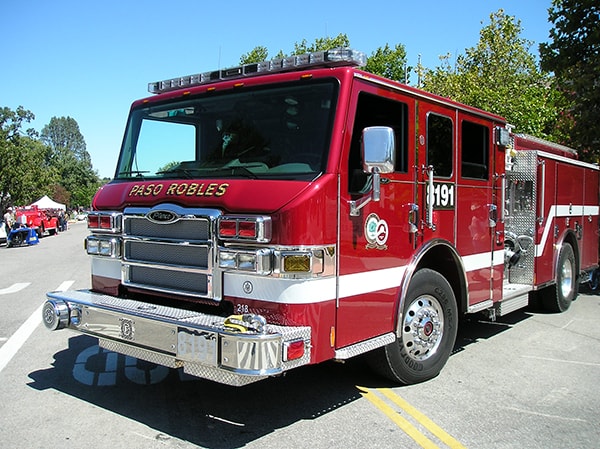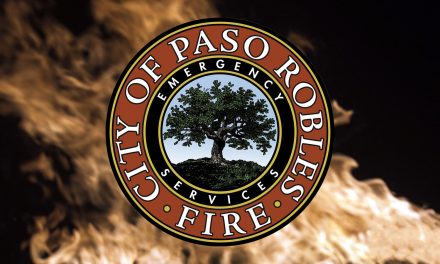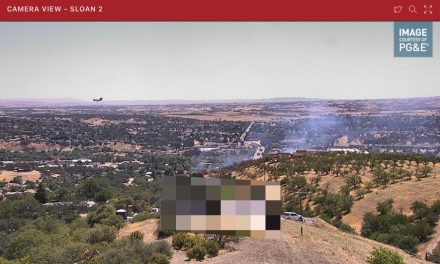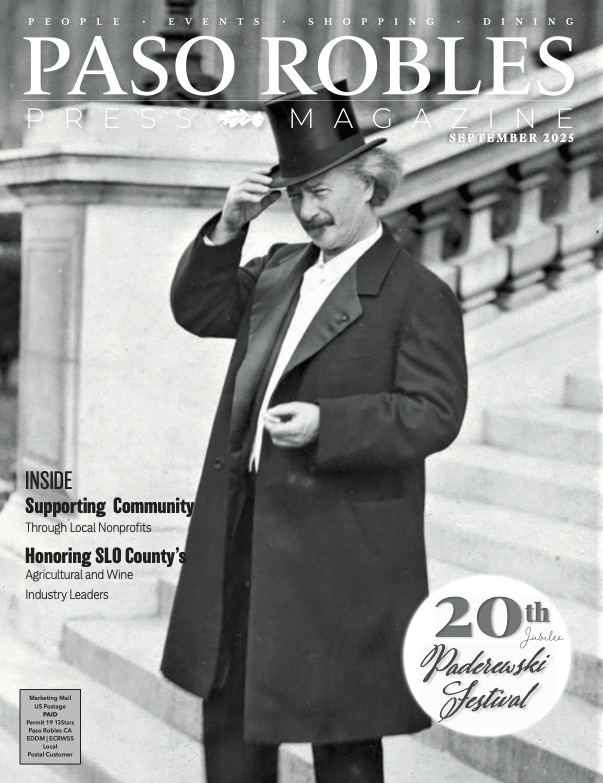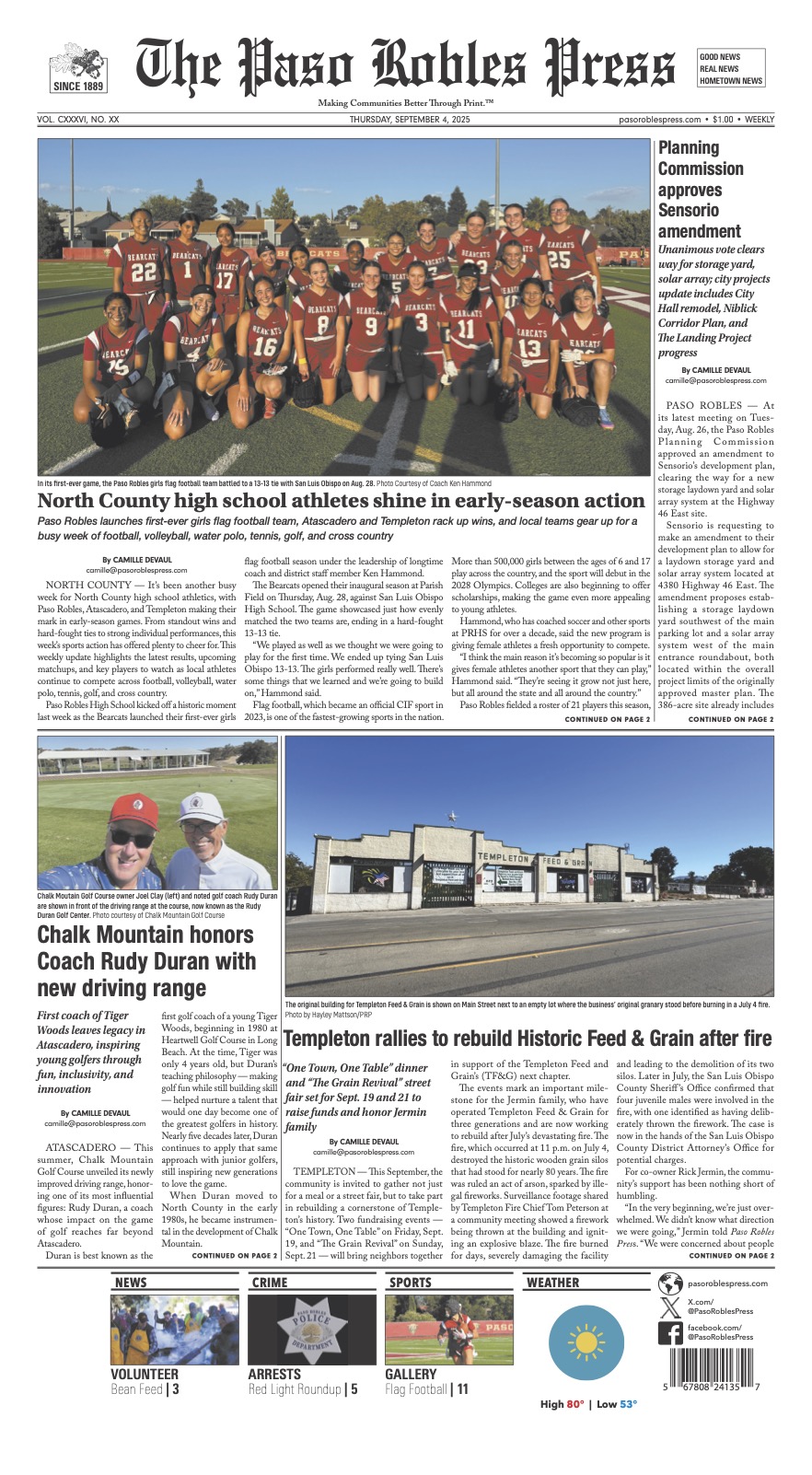Mitigation efforts, including goat grazing and vegetation management, help reduce wildfire risks in the region
PASO ROBLES — With the recent fires that devastated Los Angeles and the Palisades, many in the community have the same question on their mind, “What if that happens here? How would or could we respond?” Paso Robles Press sat down with the Paso Robles Fire Chief to learn more about how our city fights fires and how we prepare to stop them from happening.
Could a fire like the Palisades Fire come through Paso Robles? And if it did, would we have enough water to fight it? Fire Chief Jonathan Stornetta explains that the fires in LA County had special conditions, including winds that we don’t experience here and the many factors that came into play there.
“If you saw the conditions that they saw in LA, no, we would not have the water. There’s no municipality in the nation that would have the water for that,” Stornetta told Paso Robles Press. “Do we have enough water to fight the average fire? Absolutely. The other thing that factors into that is making sure you have backup power, which we have backup power; our water towers sit on a hill, so it could be gravity-fed as well.”
Further explaining the fallout of the recent LA County fires, Stornetta says the extreme winds were no surprise. During the event, Stornetta and his team met every single day with the National Weather Service to talk about that weather.
“If there was weather that was expected here, we would know all about it. And there’s a number of steps we can take,” says Stornetta. “One, we have those daily weather briefings, we’ll know what to expect. We can obviously call back personnel to increase our staffing, and also, through OES, we can do what’s called pre-position … and that’s exactlywhat they did down there [LA County]. They had a bunch of pre-positioned equipment down there but the fire was moving at a rate that even that pre-positioned equipment couldn’t handle it.”
Other factors that come into play are the materials structures are made of, how far apart they are, and what kind of vegetation surrounds those homes. Mitigation — reducing the risk of loss from the occurrence of any undesirable event — plays a very large role in Paso Robles fire safety and prevention.
According to Battalion Chief Jay Enns, Paso Robles does not have the geographical alignment like Southern California to create something like the Santa Ana winds. Though we have seen up to 25 mph winds — which occurred during the River Fire in 2020 — the city sees winds out of the northeast and is protected by the mountain range to the west, which provides some protection.
Enns explains that this is why “We’ve done a bunch of work where we see ourselves most vulnerable, which is the [Salinas] riverbed. We’ve done a lot of work with fire breaks along the west side and the east side. But we make the east side the priority because that can actually carry into neighborhoods.”
As part of mitigation, the city has been able to utilize goat grazing in the Salinas Riverbed (riverbed), which presents the highest fire risk, with nearly all fires there being human-caused. The 2020 River Fire, which damaged nine structures and destroyed two homes, underlined the necessity of these mitigation efforts. However, it took Stornetta and his team two years to get approval from state agencies for mitigation methods like goat grazing and prescribed burning. The Regional Water Quality Control Board and the Department of Fish and Wildlife oversee these areas, necessitating permits and agreements for any vegetation management activities. Because of the often long and expensive process, it is to get something like grazing approved, many cities do not utilize it or attempt to get approval.
“That riverbed would look amazing if it was up to us, but we can’t do it,” said Stornetta, frustrated with the hoops they have to jump through with outside agencies. “We actually declared a local emergency to make this start happening. That’s what it took: a local emergency, which is ridiculous.”
Annually, the department has to submit an annual work report to the state that includes what they plan to do that year, where they plan to do it, and with what methods. Enns explains that the agencies are most concerned with the canopy cover and how that impacts water quality. But he says he has developed a good working relationship with the agencies that have helped them take precautious measures to protect the city.
But it wasn’t always this way when it came to preventing fires in Paso Robles, says Stornetta: “In the early ’80s, when I grew up here, they used to take dozers down the middle of the riverbed … and clear it out. It was where all the kids went to fish, ride their motorcycles, swim, and then, through environmental concerns, they stopped doing that. Now we have all this overgrowth down there. That’s a problem we’re seeing throughout the state.”
One of the most significant collaborations has been with the San Luis Obispo County Fire Safe Council. Their partnership has been instrumental in continuing and expanding work initially funded by the city council. Through this joint effort, they secured over $200,000 in grant funding in the past year alone. This funding has facilitated critical initiatives such as grazing and crew work, covering approximately 100 acres annually to mitigate fire risks.
“This last summer, for the first time, we actually grazed both sides of the riverbed simultaneously, and we had just a little over 1,300 animals grazing. We got the work done much quicker,” Enns adds, who has worked hard to expand the department’s vegetation management program.
Additionally, they were able to receive grant funding from Cal Fire for equipment for vegetation management. With that, they were able to purchase a remote track chipper for the city to help with cleanup open spaces, and a remote mower for mowing areas and hillsides where it may not be safe to have someone on a mower.
Enns adds, “We continue to evaluate areas of the city where we can expand and do additional work … we try to prioritize the areas that need it first and then expand from there. We expanded in a couple of drainages this year.”
So when it comes to fires here in Paso Robles, Enns and Stornetta stress the importance of being prepared, understanding evacuation zones, heeding warnings, and having an emergency plan are critical to survival.
“Our three prior priorities, No. 1 is life,” says Stornetta. “We need to get people evacuated; we need to get them out of there. We’ll utilize the reverse 9 1 1 system … We’ve been telling everyone to know what zone you live in. We’re gonna put those alerts out. And then after that, secondarily is property.”
Enns adds that no two incidents are the same. So when an emergency does strike.
He explains, “We utilize the Incident Command System (ICS). It’s a very flexible command structure for managing an incident. You have your incident commander; usually, the first arriving officer could be a captain. If it’s the engine, first, they take ICS, and they start making decisions and building out the team.”

